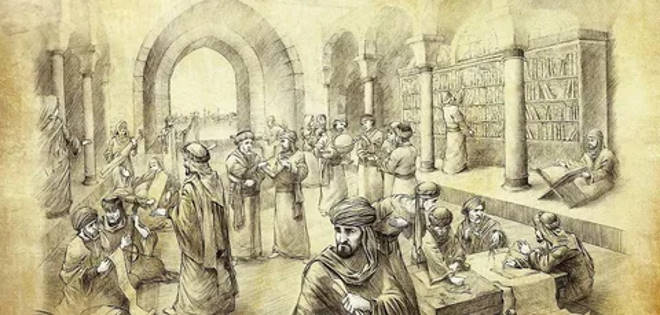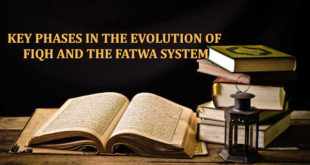Thousand years ago, in Gurganj (Old Urgench), the capital of Khwarazm, the great scientific center of the East, Dar-ul Hikma and Ma’rif, was established under the direct leadership of the encyclopedic scholar Abu Rayhan Biruni. This university, which deals with current issues of science, has taken a worthy place in the development of world science, continuing the ancient scientific and enlightenment traditions formed in Baghdad two centuries ago, the “Bayt-ul Hikma” and Central Asia, especially in Khwarazm. The work of the scholars who created Dor-ul Hikma wa Ma’arif has aroused great interest among European and Russian orientalists in the last century. European scholar E. Zakhau, Russian orientalist acad. SP Tolstov, I.Yu. Krachkovsky, A.Yu. Yakubovsky, P.G. Bulgakov, Uzbek scientists acad. in their research they studied in depth the activities of this scientific institution and substantiated that it was the Academy of Sciences of its time. This scientific institution is now named after the Khwarazm Mamun Academy.
Named “Dor-ul Hikma” or “Majlisi uloma”, this place of learning was not a random gathering of a group of scholars, writers and poets who wanted to glorify the Khwarazmshahs. It would be absolutely wrong to look at the matter from this perspective. In other words, it did not form by chance on dry land, but had its own solid ground. The Mamun Academy is first and foremost directly related to the scientific and enlightenment roots of ancient Khwarazm in the distant past, and it was also a legitimate result of the cultural rise of the early medieval Renaissance. In ancient Khwarazm, interest in astronomy, mathematics and other sciences began much earlier.[1]
In the words of the First President of the Republic of Uzbekistan Islam Karimov, Khwarazm, one of the ancient cradles of human civilization, is one of the sacred lands on which the foundation of the first Uzbek statehood was laid. The Zoroastrian religion and the holy book “Avesto”, which is the spiritual wealth of mankind, was created on this beautiful land.
Three thousand years ago, on this sacred land were built high agricultural culture based on artificial irrigation, unique irrigation facilities, beautiful cities and majestic architectural structures, the ruins of which are still preserved.
Also, the fact that the Khwarazmians had their own writings based on the Aramaic script two and a half thousand years ago shows that they were literate and enlightened people. In the middle of the last century, Khwarazm’s Tuprak Qala, Ayoz Qala, Qoyqilgan Qala, Hazarasp and other ancient fortresses Samples of ancient inscriptions, household items, jewelry, delicate sculptures, colorful paintings on the walls of the palace, the ancient observatory in the castle and the first astronomical instruments, all of which show that there was a high level of cultural upsurge in Khwarazm in ancient times.
Biruni testified that the ancient Khwarazmians had their own calendar system related to farming. The need for periodic planning of agricultural work played an important role in the strong development of mathematics and astronomy in Khwarazm. The construction of large canals and irrigation facilities, which are the basis of agriculture, beautiful cities, palaces and other architectural structures also require the development of mathematics, geometry, topography. Unique jewelry and colorful fine artwork testify to the high level of chemistry and mineralogy here.
Trade and cultural ties with foreign countries influenced the early development of the sciences of geography, cartography, and ethnography. This means that Khwarazm has long had a material and spiritual basis for the creation and development of the exact and human sciences.
In addition to the above factors in the formation and development of the Khwarazm Mamun Academy, the works of ancient Greek scholars and scholars such as Muhammad al-Khwarizmi, Ahmad al-Farghani, Ahmad al-Marwazi, Abbas al-Jawhari, who worked in the “Bayt-ul Hikma” in Baghdad in the IX century and their discoveries also played an important role. Scientists of the Mamun Academy were spiritually nourished by the works of the above-named scholars, enriching and developing their scientific conclusions and discoveries with their research.
After the Arab conquest, two governments were established in Khwarazm. The southern part of Khwarazm was ruled by the African ruler Abu Abdullah Muhammad in the city of Kat, and the northern part by the Emir of the Caliphate Mamun ibn Muhammad (995-997). In the battle between the two rulers, Mamun ibn Muhammad won, united the whole of Khwarazm under his control, took the title of Khwarazmshah and moved the capital to Gurganj. During the reigns of his successors Ali ibn Mamun (997-1009) and Ma’mun II ibn Mamun (1009-1017) in Khwarazm the ancient system of statehood and cultural and enlightenment traditions were revived, urban life, trade and handicrafts flourished as never before. The Arab historian Istakhri states that in the early tenth century there were 9 to 13 cities in Khwarazm, but half a century later the number of cities tripled to 40. Cities such as Gurganj, Khiva, Kat, Hazarasp, Ardakhushmison (Vayangan), Kardaranxos (Qalajik) became the major trade, economic and cultural centers of the East. The Khwarazmians even went as far as Spain and established trade and cultural ties. In particular, the status of the capital Gurganj has increased, the city has developed and architectural structures, many beautiful palaces, caravanserais, majestic mosques and madrasas, public buildings and bazaars have been built. This was the prelude to the creative work that developed in Khwarazm in the XII-XIII centuries.
[1] Ahmad Muhammad. “Islom hazorasi”, Toshkent “Movarounnahr”, 2004
 Imom Buxoriy xalqaro ilmiy-tadqiqot markazi bukhari.uz
Imom Buxoriy xalqaro ilmiy-tadqiqot markazi bukhari.uz












